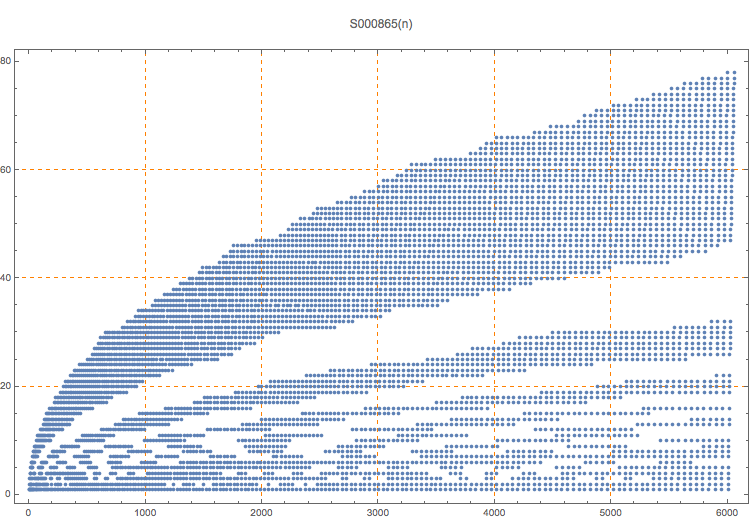PrimePi of the irregular table containing the distinct prime factors of binomial(2*n,n).
1, 1, 2, 1, 3, 1, 3, 4, 1, 2, 4, 1, 2, 4, 5, 1, 2, 5, 6, 1, 2, 3, 5, 6, 1, 3, 5, 6, 7, 1, 5, 6, 7, 8, 1, 2, 4, 6, 7, 8, 1, 4, 6, 7, 8, 9, 1, 3, 4, 7, 8, 9, 1, 2, 3, 7, 8, 9, 1, 2, 3, 7, 8, 9, 10, 1, 2, 3, 7, 8, 9, 10, 11, 1, 2, 3, 5, 8, 9, 10, 11, 1, 2, 3, 4, 5
1
This sequence makes it clearer that the prime factors of binomial(2*n,n) fall into ranges n*(1,2), n*(1/2,2/3), n*(1/2,2/5),… which is n*(1/k,2/(2k-1)) for k=1,2,3,…,kmax. Here kmax depends on n.
T. D. Noe, Plot of 200 rows
T. D. Noe, Table of 200 rows
(Mma) PrimePi[Table[Transpose[FactorInteger[Binomial[2*n, n]]][[1]], {n, 20}]]
Cf. S000864.
nonn,tabf
T. D. Noe, Apr 21 2016
